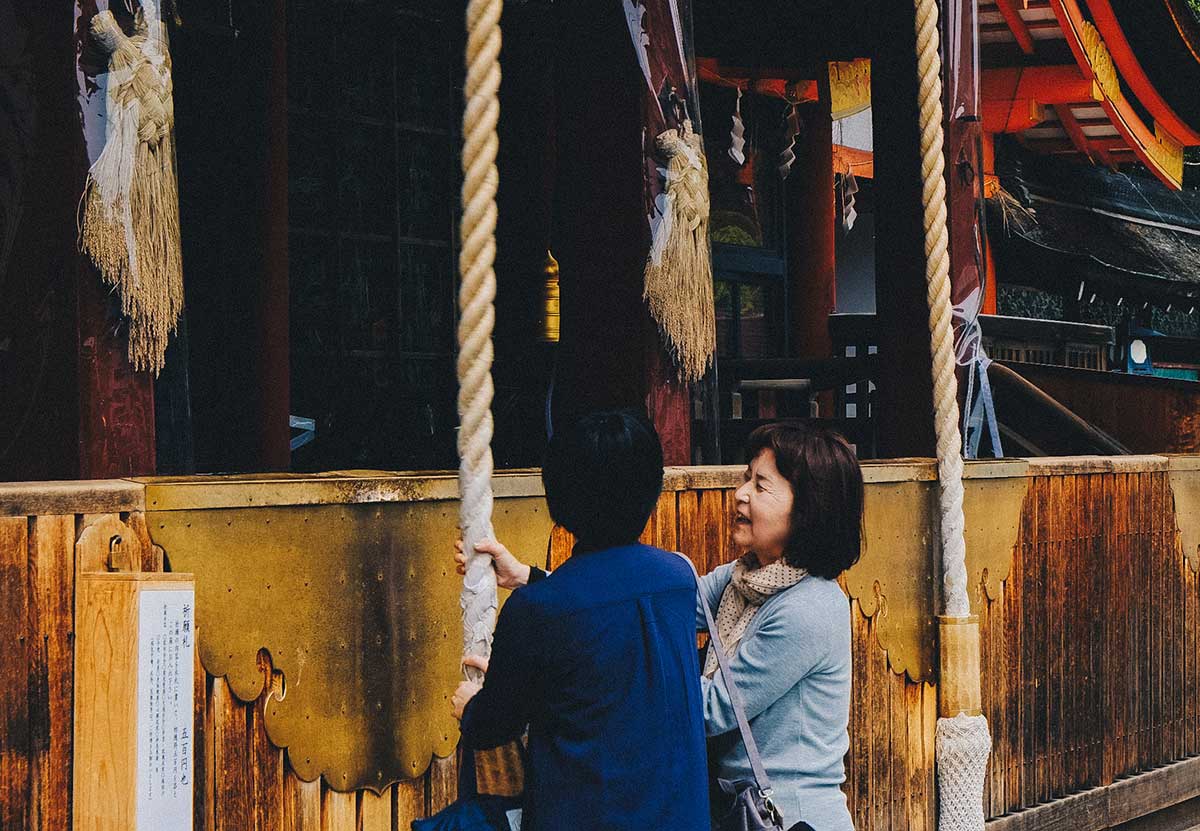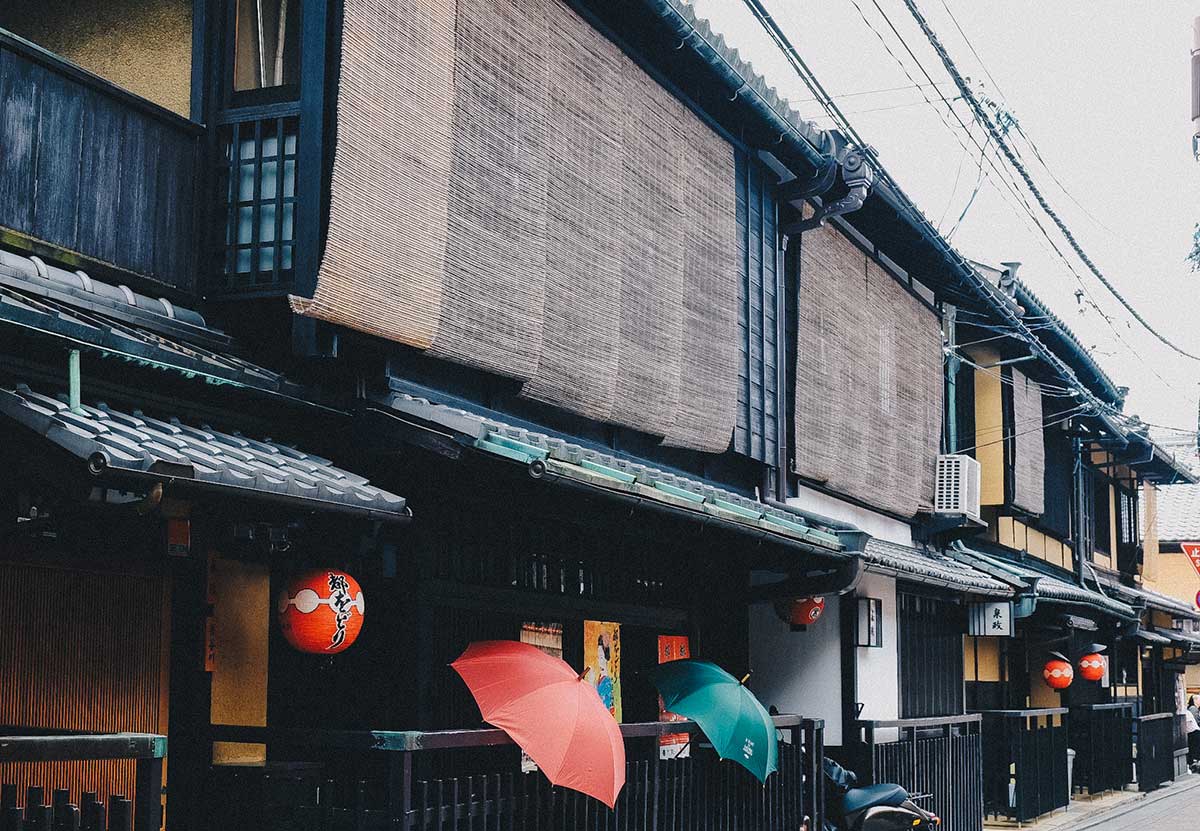Kyoto, Japan’s religious and cultural hub, attracts millions of visitors every year from all over the world. There are so many things to see and do that one could easily spend a month here and just scratch the surface. So to help you make the most of your time in Kyoto, here are some of the top attractions and activities Grasshopper guests have enjoyed during visits.
As one of the best-preserved cities in Japan, Kyoto is the unofficial cultural capital, and you can take a walk through history at its many UNESCO heritage sites and observe Japan's rich traditions. The city is home to thousands of ancient temples, shrines, Zen gardens, beautiful historic old towns and Geisha districts, making it visually fascinating at every turn. While a great place to visit any time of the year, we’ve discovered that spring or fall are ideal seasons, with the local flora providing a scenic backdrop of bright cherry blossoms or warm hues of red & orange from the maple trees.
Let's check out this list of unforgettable things to do and see in Kyoto!

Visit temples & shrines
Kyoto is world famous for its sacred ancient temples and shrines. There are literally thousands of in the city and nearby countryside, so choosing a few to see on a short visit can be daunting. But here are the top 4 must-visit temples and shrines in Kyoto:
Kiyomizu-dera Temple
Located in eastern Kyoto, atop a hill overlooking the city, Kiyomizu-dera Temple is recognized in the Historic Monuments of Ancient Kyoto UNESCO World Heritage site listing.

With a history that dates back 1200 years ago, the temple holds the sacred Eleven-headed Thousand-armed Kannon Bodhisattva, which is faithfully worshipped by the locals. The architecture of the temple's Main Hall is marvelous, built on a steep cliff using a traditional Japanese method of construction. The assembled collection of pillars and rails firmly supports the whole structure and makes it highly earthquake-resistant.

Overhanging the hall is the Kiyomizu Stage which is also supported by wooden pillars and rails. This traditional wooden structure continues to support the building and the stage, and the breathtaking views mean it is always bustling with visitors year-round.
While you visit this temple, don't forget to check out the Otowa Waterfall. Legend has it that those who drink this sacred water are able to have certain wishes granted. Split into three streams, one grants love, another knowledge and the third fortune, but you should not drink from all three, so pick wisely!
Fushimi Inari-taisha Shrine
Undoubtedly, this is one of the most impressive and memorable sites in Kyoto, and probably the most photographed. Indeed it can be said that one hasn't really been to Kyoto without visiting Fushimi Inari-taisha. A scenic stroll up this mountain-top shrine can easily consume half a day, if you would like to explore it with the Grasshopper team make sure to check out our Kyoto Explorer Tour Extension.

As an important Shinto shrine in southern Kyoto, Fushimi Inari-taisha is dedicated to the god of rice, Inari. The complex is Kyoto's most iconic treasure, famous for its intriguing network of 10,000+ bright vermilion Torii (shrine gates). The main shrine sits at the base of Mount Inari while the hiking trail which runs through the torii gates spans 4km up the mountain, with many smaller shrine checkpoints along the way. Expect amazing views of Kyoto at the Yotsutsuji Intersection, roughly half-way up.
Kinkaku-ji Temple (the Golden Pavilion)
Kinkaku-ji is a Zen temple which is adorned in gold leaf and beautifully reflected in the water of the Mirror Pond it overlooks, this is also probably one of the most well-recognized images of Kyoto.

Originally built as a retirement villa of Shogun Ashikaga Yoshimitsu, the site was soon converted into a Zen temple after his death. Kinkaku-ji temple has an impressive structure which each floor using a unique style of architecture. The walk around the impeccably manicured grounds can be quite peaceful if fortunately timed, yet because this is one of the most popular sites in Kyoto you can expect it to be packed with visitors at most times.
Ryoanji Temple
Nearby is another popular Zen temple, Ryoanji Temple, famous for its magnificent Zen-style rock garden. The temple and its garden were recognized as a UNESCO World Heritage Site in 1994.

Unlike standard Japanese gardens which often contain ponds and streams, a Zen rock garden features a dry-landscape of rock, sand and gravel which is carefully raked into patterns that represent the ripples of water. Zen gardens are carefully designed to evoke tranquility and beauty.
What’s particularly fascinating about this Zen garden is that there are 15 stones in different sizes placed in just such a way that only 14 can be viewed at one time from any angle!
Stroll through Arashiyama Bamboo Groves
Along with Fushimi Inari and Kinkuki-ji, maybe the most picturesque site in Kyoto is the Arashiyama Bamboo Grove, which rounds out a trio of iconic Kyoto's sites.

The emerald bamboo stalks soaring high in every directions create a cool and rejuvenating atmosphere. Photos or words can’t fully capture this alluring place, so you’ll have to go there to really appreciate it.
A path cuts through the groves making for a leisurely walk or you can even try hiring a rickshaw operator. The place can get pretty busy during the day, so try to visit early in the morning when you can have the place mostly to yourself and hopefully catch some magical photos.
Spot Geiko in Gion
Kyoto is considered the most authentic city in Japan for Geisha (Geiko) and Tea Houses, with four districts where traditional customs are still intact. Gion is perhaps the most famous of these.

Gion is filled with small shops, restaurants and ochaya (traditional wooden teahouses), where geiko & maiko (geisha apprentices) entertain and perform tea ceremonies. The most popular area of Gion is Hanami-koji street. Here the alleyways are lined with long and narrow traditional wooden townhouses or ‘machiya’ of which many now serve as restaurants and small shops.

Visitors often come to Gion in a hope to catch sight of geiko or maiko as they rush their way too and from work in the evening. However, if you spot one, please act respectfully and make sure not to block their way. If you are lucky to visit Kyoto in April you can watch the annual Spring Dances (Miyako Odori) performed by geiko at the historic Gion Kobu Kaburenjo theater.
Step back in time at Higashiyama District
Higashiyama is another well-preserved historic district in Kyoto.

Walking through the narrow streets of Higashiyama is like taking a step back in time. The streets are lined with traditional wooden buildings, many dating back centuries, that house merchant shops, cafes and restaurants, catering to both locals and tourists.
Taste the authentic Japanese cuisine
No visit to Kyoto would be complete without feasting on the city's best food treats.

From cozy restaurants to hole-in-the-wall street stands in Nishiki market, Kyoto is heaven on earth for foodies, with tastes to delight every palette.
Kyoto is also highly rated for vegan-vegetarian dining, from traditional Buddhist vegan cuisine to yudofu (tofu hot-pot), there is a never-ending list of dishes to entice the non-meat eaters during a visit.
Cycle around the city
Whether on tour or traveling independently there’s no better way to explore Kyoto than on a bike.

With a predominately flat landscape, riverway bike paths and bike rental shops in every district, city cycling is an easy and convenient way to explore Kyoto. While the city has a good transit system, a bike offers you a chance to explore further and faster, with plenty of small alleyways where it seems there’s something interesting around every corner.
Enjoy your cycling adventure in the Land of the Rising Sun to the fullest - Our Kyoto Explorer Tour Extension allows you to discover more of this fascinating city, and for more independent travels our Kyoto to the Coast Self-Guided Tour is an ideal option.
Photo credits: thanks to friends and staff at Grasshopper for sharing their photos.
KICK-START YOUR |
 By Jin Posted 31st Oct 2018
By Jin Posted 31st Oct 2018







